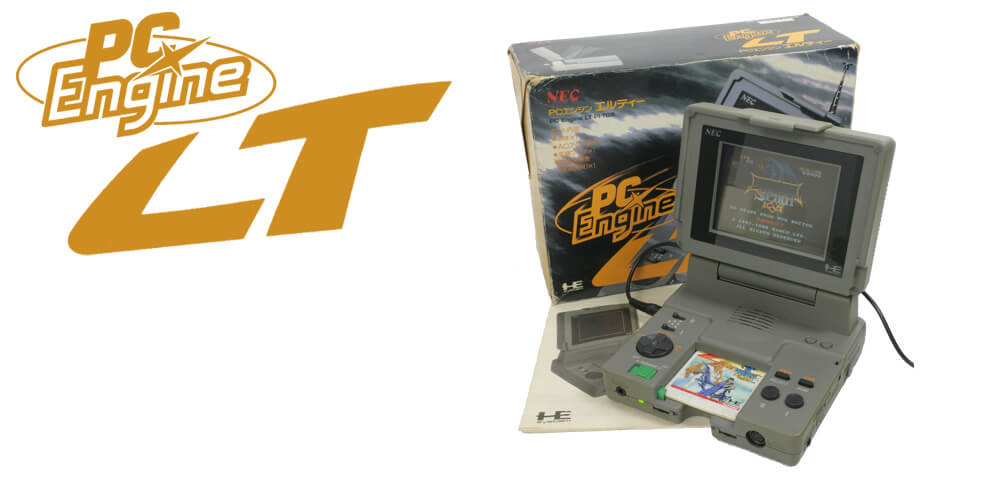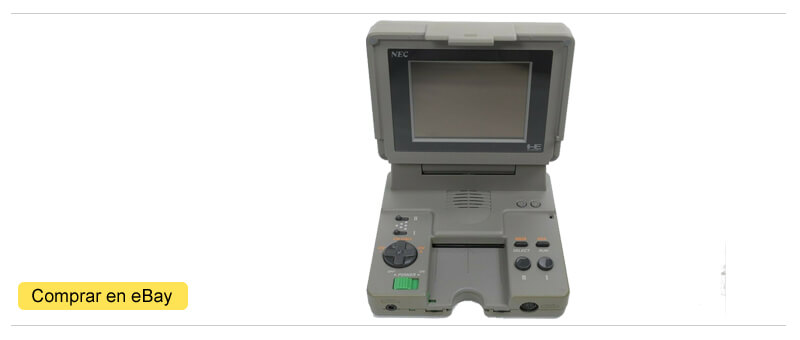The PC Engine LT by NEC (PCエンジンLT) with LT by LapTop, is one of the most sought after and valued retro video game consoles by console collectors, a rarity within the PC Engine universe that allows us to play almost anywhere , since it is a portable console (not portable), thanks to its 4-inch TFT LCD screen.
Launched on December 13, 1991 in Japan, it is considered an exclusive console of the rising sun despite the fact that it was also imported through French lands. Its high launch price of 99,800 yen greatly limited the sales of what would be the eleventh model of the PC Engine family to hit the market (PI-TG9), which is why it is so difficult to find today. .
| COMPANY: | NEC |
| CONSOLE GENERATION: | 4TH GENERATION OF CONSOLES |
| RELEASE DATE: | December 13, 1991 in Japan |
| SOLD UNITS: | 682 video games (HuCards + CD-ROMs) |
| LAUNCH PRICE: | 99,800 yen |
| PROCESSOR: | HuC6280 at 1,79 or 7,16 MHz |
| FORMAT: | HuCards (+ CD-ROM with peripheral) |
| BUY IT ON EBAY: | https://ebay.us/FqZyia |
- History of the PC Engine LT
- Price of a PC Engine LT console, how much did it cost?
- The video game formats of the PC Engine LT
- Collecting the PC Engine LT
- Buy a PC Engine LT
- Alternative to the PC Engine LT: The PCE Portable LCD Monitor from Columbus
- TOP Retro: Best PC Engine LT Games
- FAQ PC Engine LT
- Technical characteristics of the PC Engine LT
PC Engine LT
The PC Engine LT is the culmination of the PC Engine family of consoles, it is true that later more powerful compatible systems were launched, but the PCE LT maintains the aesthetics of the original system with the great addition that can be seen with the naked eye, its LCD screen 4-inch backlit full color TFT… And with TV tuner included!
Responding to the housing problems of the housing market in Japan, in which the massive concentration of people in large cities as a result of their industrialization, gave way to tiny houses in which the lack of space was the general trend, NEC surprised the world in 1991 with this incredible console with built-in monitor/TV… Japanese children would no longer have to fight with their parents for the television in the living room (rich children, of course).
Hey! Before continuing, if you are not a connoisseur of this system, we strongly recommend that you read the dedicated (and well thought out) article on the system's main console: NEC's PC Engine.
Antecedentes de la PC Engine LT
Let’s not go too far, 1983 was the year in which Nintendo launched the console that marked a before and after in the history of video games, the Nintendo Famicom. The Famicom was the console that, in the midst of the decline of the video game industry and especially of video game consoles, came to save them thanks to its incredible technical features, its price and, most importantly, the quality and variety of its video games.
The 8-bit Famicom swept Japan reaching figures never seen before, the video game industry could rest easy, Nintendo had marked the way forward. 1983, 1984, 1985, 1986… The years passed, the competition was falling before the unstoppable Famicom and despite the tremendous success, there were already those who thought that the Nintendo console was becoming obsolete. Could it be that the success of a console stagnated their technological evolution?
That was what they thought at Hudson Soft, a software development company that had extensive experience releasing video games for the Famicom. In Hudson they had the feeling that the hardware and features of the Famicom were limiting their development, so in 1985 they put a team to work on a chipset that would improve the features of the Nintendo console.
STOP! Yes, I know that from our perspective it may seem crazy to complain about a hardware that was 2 years old, but let's remember that in the 80's technological advances were continuous, remarkably surpassing the previous technology every few months.
Although Hudson’s original idea was to include his chipset in the Famicom cartridges, the result obtained was so spectacular that they ended up developing the well-known chipset made up of the HuC6280 8-bit CPU and the HuC6270 and HuC6260 16-bit graphics chips. Hudson Soft (along with Epson) had created an architecture with a CPU 4 times faster than that of the Famicom, before these features their objective changed, becoming to create a new console much superior to the Famicom.
Fortunately for them, at that time Nippon Electronics Components (NEC) was looking for a chipset and components for its new console, so when they met with those responsible for Hudson Soft, their paths were united forever. One of the most powerful associations in the history of video games had just been born, the electronic components manufacturer and the development company that had designed its own chipset, partly based on the experience of its work with the Famicom, were ready to fight against the almighty Famicom. On October 30, 1987, the PC Engine was launched in Japan, the console for those who wanted more.
This has been a very brief summary, if you liked it and want to know the whole history of the PC Engine and its different versions, you can see its dedicated article: Original PC Engine.
The PC Engine family and the NEC philosophy
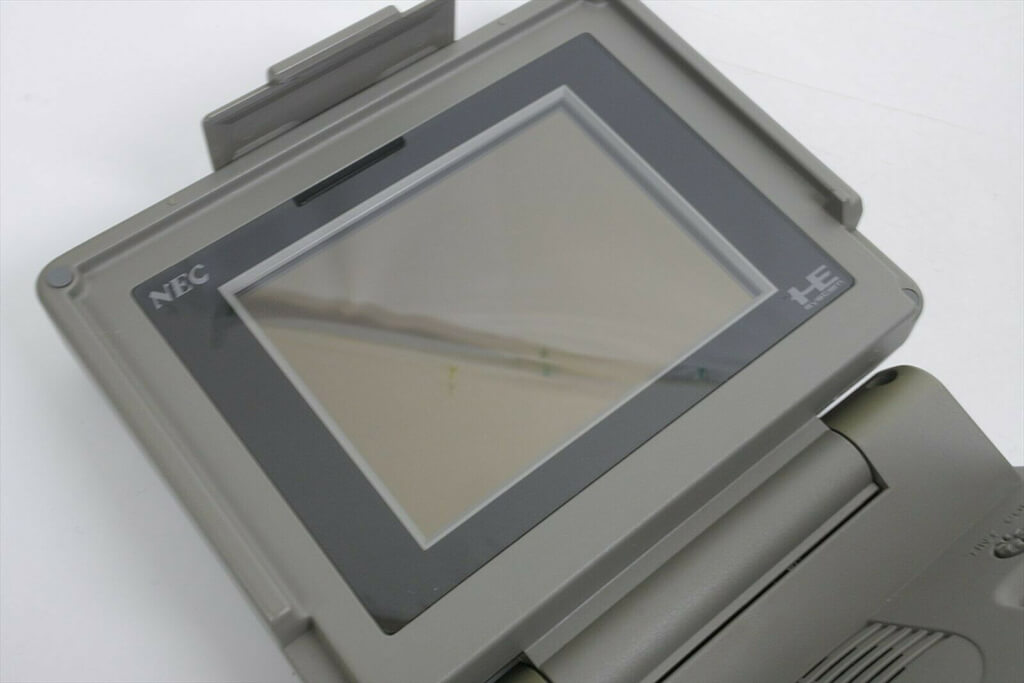
Since the release of the PC Engine in 1987, NEC has released 15 models of its system, not counting the Korean ones:
- PC Engine / Modelo PI-TG001
- SHARP X1 Twin / Módelo CZ-830C-BK
- NEC modelo PC-KD863G
- TurboGrafx 16
- PC-Engine Shuttle / Modelo PI-TG2
- PC Engine Core Grafx / Modelo PI-TG3
- PC Engine Super Grafx / Modelo PI-TG4
- PC Engine GT / Turbo Express / Modelo PI-TG6
- PC Engine Core Grafx II / Modelo PI-TG7
- PC Engine Duo / Turbo Duo / Modelo PI-TG8
- PC Engine LT / Modelo PI-TG9
- PC Engine Duo R / PI-TG10
- Pioneer LaserActive / Módelo CLD-A100
- NEC LaserActive / Modelo PCE-LD1
- PC Engine Duo RX / Módelo PCE-DUORX
All these consoles and computers have a common link, they are compatible with the original PC Engine, thus forming part of the PC Engine family.
Unlike other companies like Nintendo or SEGA, NEC worked on a base (original PC Engine and its HuC6280 and HuC6270 and HuC6260 chips), on which it added improvements every few years or even months: video outputs, CD-ROM drive, ROM, RAM, internal memory, screen… While launching cheaper revisions taking advantage of the cheaper components as the years went by. NEC had a PC Engine geared towards all sectors of the video game audience.
All this, together with the price of its video game card format (much cheaper than the cartridge), a large catalog of video games and its firm commitment to the CD-ROM format, made it possible for a 1987 core console to have a magnificent commercial life. until the mid-90’s, when his last commercial game was released in 1999, crazy. The PC Engine system in Japan was well above hardware companies such as SNK or SEGA and only behind Nintendo.
PC Engine LT / Model PI-TG9
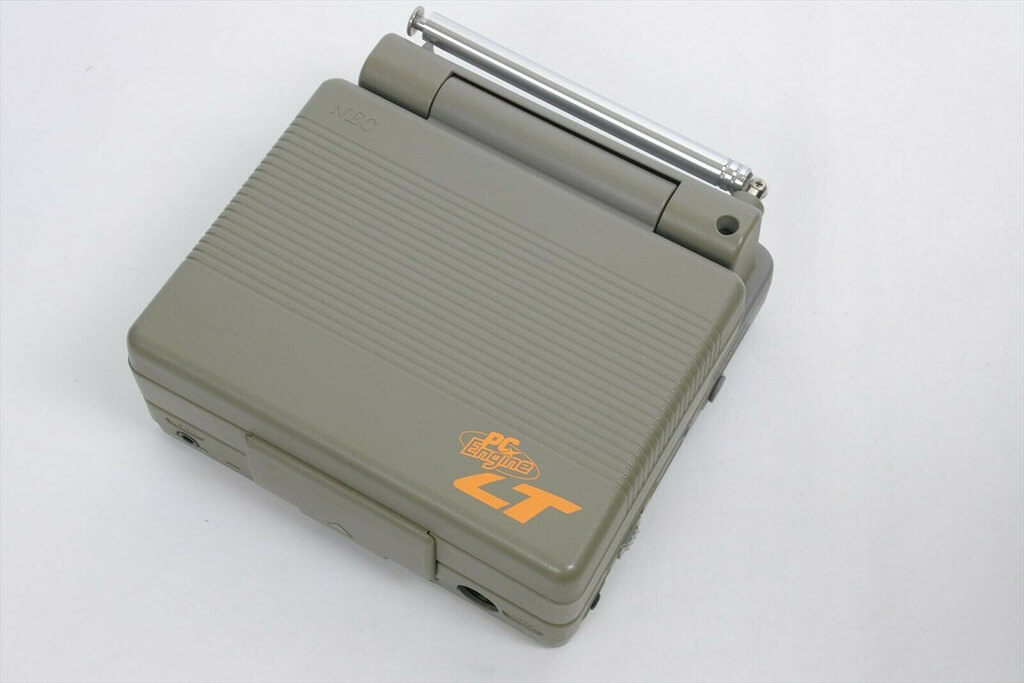
Released on December 13, 1991 in Japan, just 1 year after its PC Engine GT handheld console, the PC Engine LT is a bizarre wonder, the pinnacle of the extent to which NEC could release custom versions of its PC Engine console. for audiences as small as that of the PC Engine LT, which would be something like…
"Young people from wealthy families who do not have more than one television in their house and their parents prefer to spend a whopping 80,000 yen (difference of subtracting the value of a Core Grafx II from that of a PCE LT), instead of buying a television new and a separate Core Grafx II for 19,800 yen."
Yes, because the other target audience for this console is “workers who play consoles in their cars”, for whom the PI-AD13 power adapter was there… WONDERFUL. In case someone is thinking about it, you couldn’t play in the subway (it’s such a mangaka scene), the NEC console couldn’t run on batteries and didn’t have a battery, so it had to be always plugged in.
But the PC Engine LT is much more than a PC Engine with a screen, compatible with the vast majority of peripherals and extensions, the console has an antenna and a TV tuner, something that was tremendously practical in those years. Being considered a portable console, it has a controller built into the casing itself, in addition to having an input for the usual pad, which enables multiplayer gaming to a greater extent than on the original console.
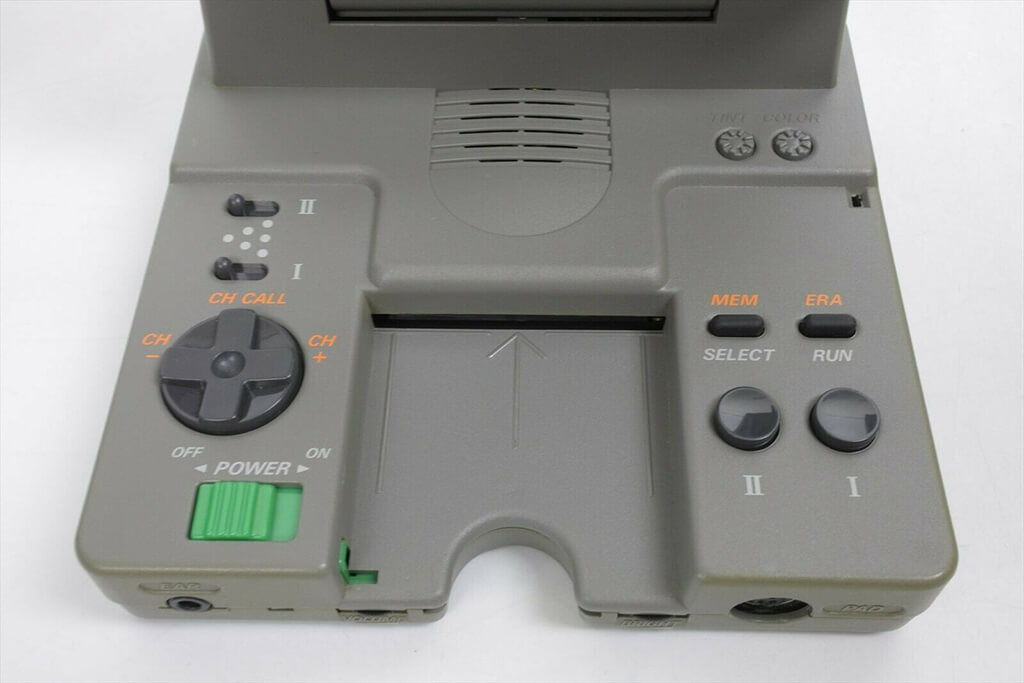
The console also has headphone and video input, in case you want to give another use to the 4-inch screen, in addition to having sound through a speaker. The weight of it is 650 grams, so the best option is to use a controller and leave it resting on a surface. Likewise, this is currently a 100% collector’s machine, so don’t worry about the fact of the game sessions, that when we reach the current price you will understand me.
Continuing with the console, its dimensions are very small: 135mm long x 140mm wide and 61mm thick. In other words, a portable console that fits in the palm of your hand, including the screen. Let’s remember that we are talking about 1991, the year in which most of us were playing on the now tiny screen of the Game Boy and its 4 tones, so no matter how extravagant the console may seem to us, let’s be aware and value the technological advance that supposed.

The price of the original PC Engine LT
How much did a PC Engine LT cost? It is of little use that I tell you a launch price of a console from more than 30 years ago, in a foreign currency such as the yen… The best way for you to get an idea of what the price of the NEC console meant with a built-in monitor and how enormously expensive it was, is to see this comparison by price and year with the rest of the systems:
| Nintendo Famicom | 1983 | 14.800 yenes |
| SEGA SG-1000 | 1983 | 15.000 yenes |
| SEGA Mark III | 1985 | 15.000 yenes |
| PC Engine | 1987 | 24.800 yenes |
| SHARP X1 Twin | 1987 | 99.800 yenes |
| SEGA Mega Drive | 1988 | 21.000 yenes |
| PC-KD863G | 1988 | 138.000 yenes |
| NEC CD-ROM 2 | 1988 | 32,800 yenes + 27.000 yenes (interfaz) |
| PC-Engine Shuttle | 1989 | 18.800 yenes |
| PC Engine Core Grafx I | 1989 | 24.800 yenes |
| PC Engine Super Grafx | 1989 | 39.800 yenes |
| Nintendo Super Famicom | 1990 | 25.000 yenes |
| SNK Neo Geo | 1990 | 58,000 yenes |
| PC Engine GT | 1990 | 44.800 yenes |
| SUPER CD-ROM 2 | 1991 | 47.800 yenes |
| PC Engine Core Grafx II | 1991 | 19,800 yenes |
| PC Engine Duo | 1991 | 59.800 yenes |
| PC Engine LT | 1991 | 99.800 yenes |
| VICTOR WonderMega | 1992 | 79,800 yenes |
| PC Engine Duo R | 1993 | 39,800 yenes |
Not even the SuperGrafx ladies and gentlemen, the 99,800 yen output that NEC put on its console with screen included, were well above the prices of the competition, an example of the cost of incorporating this type of technology, perhaps being too ahead of their time as was later demonstrated by their low sales.
Looking at the comparison it is easy to conclude that the LT was a very expensive console, a system completely removed from contemporary consoles including the PC Engine itself, which had a launch price of 24,800 yen 4 years earlier.
The video game formats of the PCE LT
As we have already mentioned, the PC Engine LT is fully compatible with the PC Engine (except for some memory modules to save games), so it has the same games and formats. To clarify a bit all this mess of formats, in the following list we show you the combinations and formats compatible with the portable console:
- Format HuCard: It is the original and main format of the console, compatible with all its versions.
- Format CD-ROM 2: The first format devised for CD-ROM 2 released in 1988.
- PC Engine LT + CD-ROM 2 + SYSTEM CARD.
- PC Engine LT + SUPER CD-ROM 2.
- Format SUPER CD-ROM 2:The evolution of CD ROM 2, a new format that required new hardware or extensions, but that allowed more developed video games than its previous versions, as well as a better gaming experience.
- PC Engine LT + CD-ROM 2 + SUPER SYSTEM CARD or ARCADE CARD PRO.
- PC Engine LT + SUPER CD-ROM 2 + ADAPTADOR PI-AD18
- Format ARCADE: These two cards launched in the spring of 1994 raised the memory of our consoles by 18 Mbit of RAM, making us touch the sky with our hands. 12 video games were released for this format.
- PC Engine LT + CD-ROM 2 + ARCADE CARD PRO
- PC Engine LT + SUPER CD-ROM 2 + ADAPTADOR PI-AD18 + ARCADE CARD PRO
In practice, the best combination to be able to run the greatest number of video games and formats with our retro console is the PC Engine LT + SUPER CD-ROM 2 + PI-AD18 ADAPTER + ARCADE CARD PRO, thus leaving aside only the 5 exclusive SuperGrafx games and the LaserActive LD-ROMs.
If you don’t know very well what we are talking about, we recommend you again the original PC Engine article in which all the possible formats and improvements are exposed in a developed way.
Collecting the NEC PC Engine LT

Currently there is the same console (without a screen) at much cheaper prices… Who is going to want to spend the money that the PC Engine LT costs today? We retro video game collectors, always US.
The PC Engine LT has become over the years the holy grail of Japanese collecting, a tremendously exclusive console only available to a few, a museum piece, the true wet dream of parents as a server. To give you an idea, in 1 month that we were in Japan in which, among many other things, we went through all the retro video game stores there were and for having, we even got to see a unit. Two years later my brother (Infoconsolas webmaster) came back and more of the same.
Consequently, to the typical question of whether it is worth collecting the PCE LT, the answer is a resounding YES, what happens is that we CANNOT… As you will see in the next section, they do not usually sell more than a few units at the same time around the world and its price is in the 4 figures (2022).
Buying a retro PC Engine LT console
Come on! Yes, yes, we have already heard that NEC’s retro console with a built-in screen is very expensive, but we want to see it with our own eyes. Maybe it’s not so expensive and we’ll treat ourselves! Collectors are like that, we only trust our eyes and smell. Let’s check the current price and offer of retro PC Engine LT consoles in the following link. Take a look and we comment.
Exactly at the moment that I am writing these words (March 2022), the sale of retro PC Engine LT consoles on all of Ebay is 6 units. Its price? From US$1,200 to US$4,000, depending on its state of preservation. Consequently, we may be looking at the most expensive standard console in the landscape of collecting retro consoles and video games. Crazy.
What about Yahoo Auctions in Japan? Can you buy a cheap PC Engine LT? Today the offer is reduced to 5 units for sale within Japanese territory (without intermediaries), with current bids ranging from 104,500 yen to 298,000 yen with box. Another madness.
This is what the machine costs, its price (speculations aside) is an example of the position that this console occupies within the collector’s market, an exclusive rarity in Japan from the glorious 16-bit era, the quintessential era of retro collectibles, full of nostalgia and exclusive systems from Japan that most players in the world could not access at the time. The NEC machine has consequently become one of the most coveted consoles by any collector in the world.
This is how things stand, if you want to buy a PCE LT, you can already prepare your wallet. Normally I recommend at this point that, if you do not intend to play the console (as it happens in many cases), you consider buying a machine considered junk, junk, garbage or broken, since if your intention is only to expose yourself you can Save a lot of money. In the case of the LT, even this option is expensive, costing around 70,000 yen if you can find it.
So, if you want to buy the PC Engine LT arm yourself with patience, patience and more patience. You already know the prices, you already know that you will only find this console on specialized websites and platforms, it’s time to make passes and more passes. It is not an easy prey, we are talking about the Moby Dick of retro console collecting, if you launch yourself make sure, at least, that you are paying an adequate price. Good luck to the companions who venture into this feat.
At a minimum, the PCE LT games, being the same as the PC Engine system, are at a much more affordable price, I leave you an affiliate link in case you want to support the web: Buy Hu Cards of PC Engine LT on eBay.
STOP COLLECTOR! If you’ve seen the console listing on eBay, I want to say THANK YOU. Since 2004, the objective of Infoconsolas is to contribute to preserving the history of consoles and video games through our own collection of systems and the hours of work invested in this very website.
Being an eBay partner listing, if you buy a game or console, you will be helping Infoconsolas in the preservation of video game culture, so thank you very much again!
Alternative to the PCE LT: The PCE Portable LCD Monitor from Columbus Circle
We live in glorious times in retro video game collecting. It is true that thousands and thousands of people have joined the bandwagon with a purely speculative spirit, but the rest of the collectors that have not stopped growing since the beginning of the 21st century, have managed to create many new proposals and products based on nostalgia. retro, and the PC Engine LT has been one of the lucky consoles.
Don’t have 2,000 euros to spare to buy your own LT? Don’t worry, the Columbus Circle company has created the PCE Portable LCD Monitor, a much cheaper peripheral for our PC Engine and Core Grafx, which combines an LCD monitor with the technology and quality of 2020 (year of its launch), giving As a result, an experience very similar to that of owning a PCE LT, with the added bonus of having improvements such as an HDMI output. Is not it wonderful? Yes it is, here is a link to see the price on eBay.

TOP: Best PCE LT console games
As on previous occasions, having talked about the best games of the original PC Engine console in its corresponding article, this time we are going to share a magnificent video of Bits Era (a complete connoisseur in the system), in which he shares with us a selection of the best video games for the PC Engine.
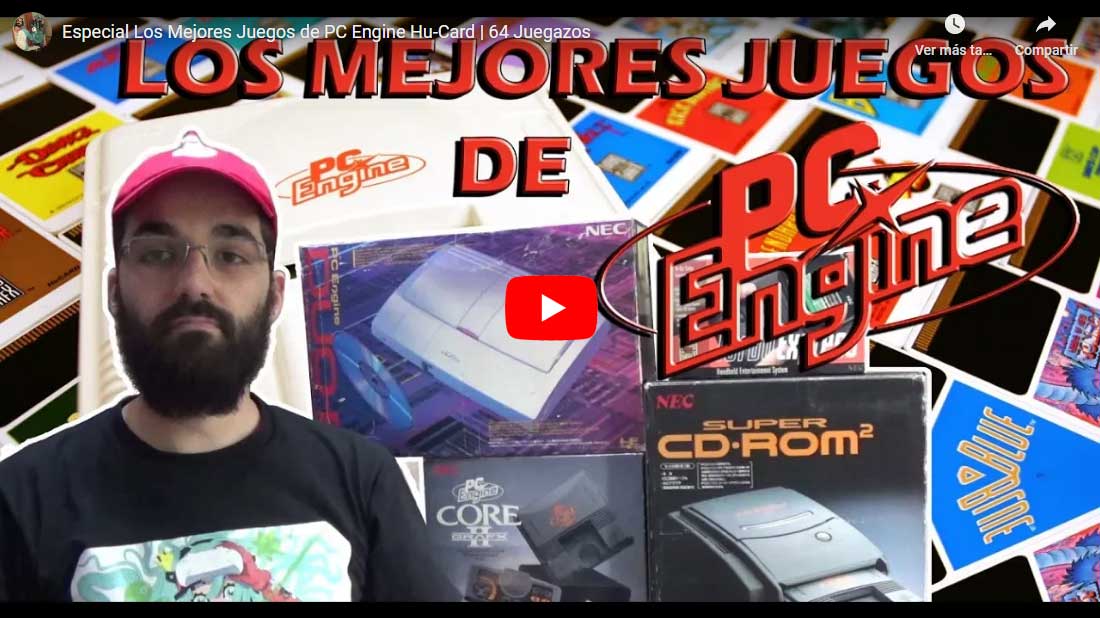
FAQ PC Engine LT
The main doubts and questions about the PC Engine LT below in this FAQ that we will update as new questions come up. Do not hesitate to make contributions in our comments! You can access with your Google account and together achieve a FAQ that helps the entire community of lovers of video games and retro consoles.
Yes, with the vast majority. It has problems depending on which memory peripheral models to save.
Yes.
There are a total of 682 video games for the system in its many formats.
Roughly speaking, the PC Engine LT includes a 4-inch screen and a pad on the console itself.
At the time of its release the recommended price was 99,800 yen.
Yes, with both, although for the SUPER CD ROM2 you need the PI-AD18 adapter.
Not really, it was also launched in France.
On December 13, 1991.
The Dead of the Brain 1 & 2, released on June 3, 1999 on Super CD-ROM² format.
Yes, with the car adapter model PI-AD13.
Yes, it has an input to connect different devices.
Technical characteristics of the PC Engine LT video game console
Here are the specifications of the PC Engine LT:
- External diameter:
- Length 135mm x Width 140mm x Thickness 61mm.
- Weight:
- Main body approximately 650 grams..
- Screen:
- 4-inch backlit color TFT LCD display (140,300 pixels).
- Audio output:
- Speaker: Round dynamic speaker (29mm diameter).
- Headphone connector: 3.5 mm diameter stereo mini-jack.
- Power supply used:
- Adapter AC.
- Energy consumption:
- 9V.
- Accessories included:
- Dedicated AC adapter.
With the difference of AV output, the technical specifications of the PC Engine LT are the same as those of the original PC Engine:
- CPU: HuC6280 (built-in sound source).
Clock: 1.79 MHz / 7.16 MHz (software selectable). A custom CPU with its own instructions added to the MOS 6502 compatible CPU. The clock frequency is 7.16 MHz, which is four times the Famicom’s operating frequency of 1.79 MHz.
- VDC (video display controller): HuC6270
- VCE (video color encoder): HuC6260
- RAM: 8 KB
- VRAM : 64 KB (32 KB + 32 KB)
Screen resolution (pixels):
- 256 x 240
- 320 x 240 (N / A)
- 336 x 240
- 512 x 240
Approximately 224 lines are within the TV’s display range. The number of pixels in the horizontal direction can be arbitrarily changed from 256, 336 and 512. VDC (HuC6270), it has a 16-bit register and can handle 512 horizontal coordinates without any problem. There is not enough VRAM capacity to display a graph created in pixel units with 512 pixels horizontal, but it can be displayed using the BG display. Simultaneous color development up to 512 colors. Pallet Sprite 16 + 1, without pallet on the BG side. Sprite 15 x 256 colors at 16 x 16 dots + transparent color, BG: 16 of 256 colors at 8 x 8 dots. When outputting NTSC signals, it is possible to cut off the color burst signal and display in monochrome.
Sprites
- Up to 64 (1 sprite size is from 16 x 16 to 32 x 64 color designation 15 colors out of 256 colors + transparent color)
- The maximum size of 16 x 16 in the horizontal direction is 16 (limited to 14 in 320 point landscape mode). This is overclocked when 16 sprites are arranged side by side. Since correct operation of the PC Engine cannot be guaranteed, it was configured in accordance with NEC guidelines.
Background (BG screen) 1 screen (1 character is fixed at 8 x 8 pixels and a maximum of 2048 is defined. 16 colors out of 256 colors are specified)
- Technical characteristics obtained from wikipedia.
External sources and links
- Console graphic resources:
https://ebay.us/xI6qgq

